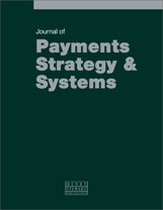Introducing a framework for measuring the quantitative benefits of privacy enhancing technologies
Abstract
This paper explores the benefits of using privacy-enhancing technologies (PETs) to make traditional payment processes more private. PETs decrease privacy risk by reducing the amount of sensitive information accessible to payment-processing personnel and systems. This paper proposes a framework for quantifying the risk-reduction benefits of PETs. This method can be used to calculate the amount of privacy-risk exposure that may be created by a set of payment activities, estimate the amount by which PETs can decrease that exposure, and compare that quantified benefit against the possible drawbacks associated with PETs. Note that an in in-depth assessment of these drawbacks is outside the scope of this paper.
The full article is available to subscribers to the journal.
Author's Biography
Ken Isaacson is a payments adviser and payments strategist at the Federal Reserve Bank of Cleveland, working to improve the US payment system by making it faster, safer and more efficient. He has broad experience in payments policy and operations, including revenue collections for US government agencies and the operation of the Fedwire® Funds, Fedwire Securities and National Settlement Services. Ken holds an MBA in finance from Columbia Business School and an AB in economics from Washington University in St. Louis.
